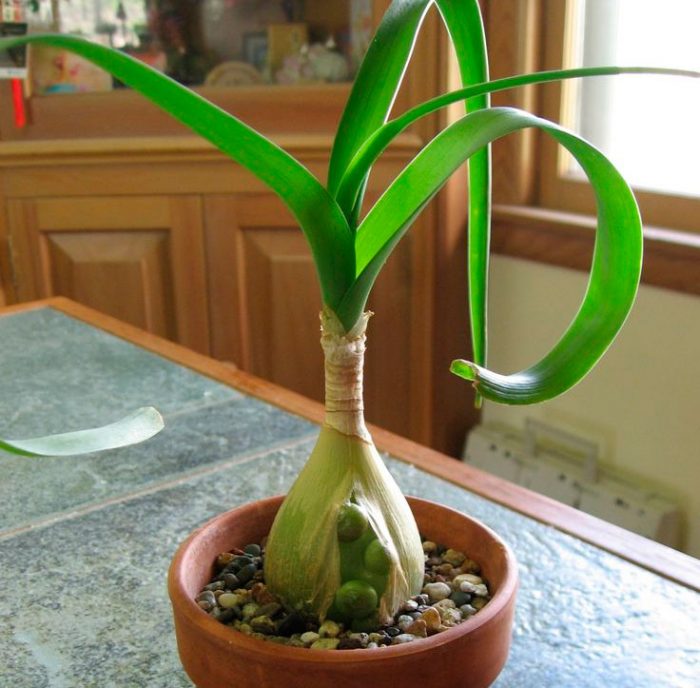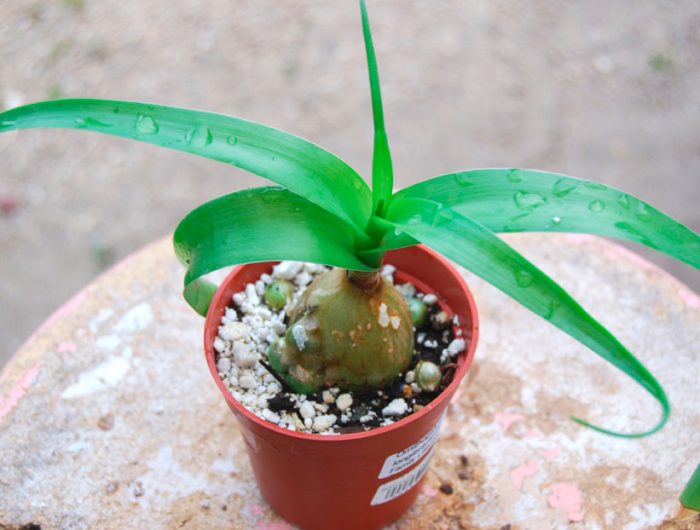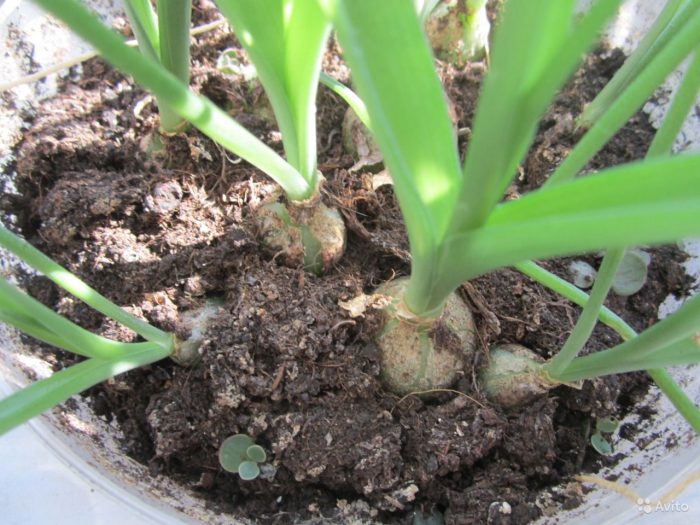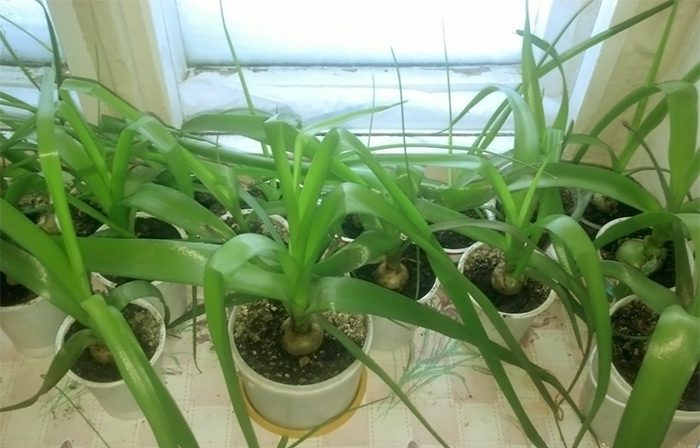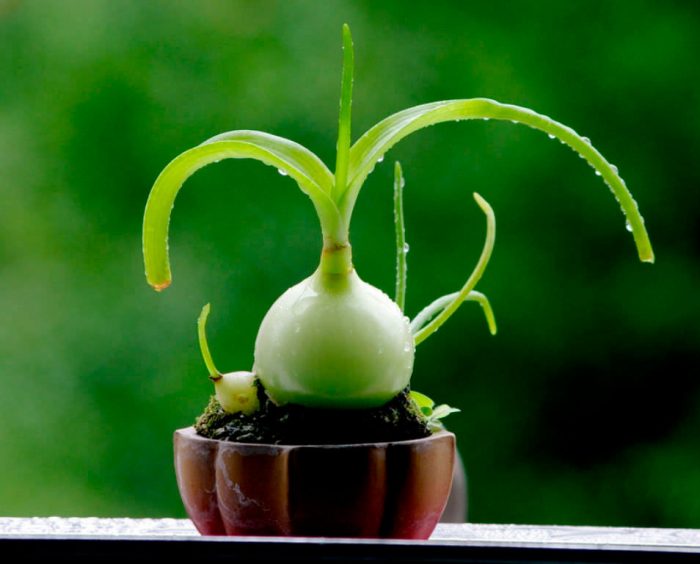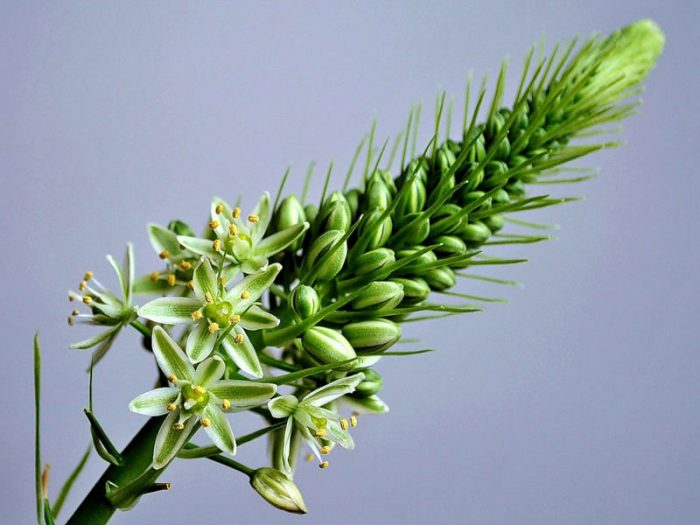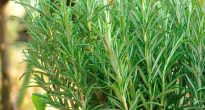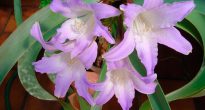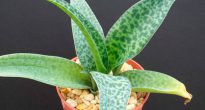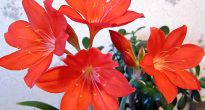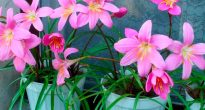Now you will not surprise anyone with exotic plants. Many people grow them on their windowsills in apartments and houses. Among them you can find and indian onion with spectacular leaves and colorful blooms. People call him “wonderful healer". It is not only an attractive ornamental plant, but also healing. In folk medicine, it has a different name - tailed poultry farm... It can be grown both outdoors and indoors.
Indian onion is an unpretentious plant. His homeland is South Africa, so the poultry farm is so persistent and hardy. Can live up to 30 years. In our latitudes, it is grown as a perennial bulbous plant. The plant does not impose special conditions on its owners. With proper care, the leaves of the tailed bird house will actively grow, and this exotic flower will delight you with long flowering.
Outwardly, the Indian bow looks very original. Growing back, long thin leaves take on unique shapes. The green tuber with thin white-cream scales, which is located on the surface of the earth, eventually turns into a ball. The flowering of the poultry farm is just as unusual. First, a flower arrow appears, which rapidly stretches in length, and then small original and graceful flowers are shown. Numerous flowers are discreet, greenish in color. After flowering, the peduncle must be trimmed so that the poultry farm does not waste energy on setting seeds. Many novice growers often confuse Indian onions with nolina. Outwardly, they are very similar.
Content
Indian onion care at home
The poultry garden can be grown both at home and in the garden. On a personal plot, he is planted in an empty place. The plant grows quickly, gives a lot of planting material. The roots of Indian onions go one meter deep. They take care of him, as for all bulbous cultures. Indian onions need to be watered, fed with complex fertilizers. In winter, the bulbs are dug up, all the children are carefully separated and placed in a cool place for wintering (refrigerator, basement).
The soil
In indoor conditions, the poultry farm needs to create optimal conditions. The plant needs a small pot with good drainage at the bottom. They put him in earth mix from turf, leafy land and river sand (proportion 1: 1: 2). Only the lower part of the bulb is placed in the ground.The rest of it should remain on the surface of the earth. Thanks to this method of planting, children can be separated painlessly.
Watering
Indian onions need regular, moderate watering. Over-watering will kill the plant. In winter, the poultry farm can be watered only when the top layer of the earth is completely dry. It is equally important that the air in the room where the plant is grown is humid. Dry air leads to yellowing and curling of the leaves. In order to avoid the development of diseases, it is necessary to regularly spray the air and the poultry farm itself. If Indian onions do not grow well, watering should be reconsidered. Excessive moisture leads to root rot. The plant can survive for 2-3 months without water.
Lighting
Much of the development of Indian bows depends on lighting. The plant is unpretentious and will grow well on shaded windows. But the plant will feel most comfortable on the south or east window. If this is not possible, the poultry farmer needs to arrange "sunbathing", take it out for a week every month on a bright window. This can make up for the lack of light. It should be remembered that the poultry farm must be protected from the hot rays of the sun. In summer, the plant can be taken out to the balcony or planted in open ground before the first frost. In the garden, the roots of the poultry farm grow strongly, they can be easily damaged during transplantation. But a large number of children are formed near the bulb, which can be used for vegetative propagation.
Top dressing
When growing a poultry farm in indoor conditions, it must be fed regularly. Mineral and organic fertilizers are suitable for him. It is useful to feed Indian onions with mullein infusion. Once a month, the plant can be watered with a weak solution of potassium permanganate or tincture of wood ash.
Transfer
In order for the poultry farm to please with abundant and colorful flowering, it should be repotted regularly. He responds well to this procedure. When replanting a flower, you need to pick up a new pot. It should be 2 centimeters larger than the old one.
Temperature
Indian onions tolerate room temperature well. It is a thermophilic plant, so in winter the indoor temperature should not drop below 12 ° C.
Reproduction
There are several ways to breed the tailed bird house. A new plant can be obtained easily and simply. The fastest and most effective method is to separate small onion babies from the mother bush. Tiny children are separated in the fall and placed in containers with moistened earth. Some onions will not have roots. There is nothing wrong with that. After two weeks, they will have an independent root system. They will be able to fully grow and develop.
They also practice sowing the harvested seeds and dividing the mother bulb in half. The seeds of the caudate poultry are small, black. Outwardly, they are very similar to onion seeds, they give good shoots. When a seed is planted in the ground, a small bulb will grow out of it. When the plant grows up, it is transferred to a larger pot with a hole for water.
The use of Indian onions in traditional medicine
Poultry tailed poultry can be used as an anesthetic, antimicrobial, wound healing agent. Mature leaves have medicinal properties. They are rich in colchicine. The plant sap contains calcium oxalate compounds. They treat wounds, bruises, joint pain. It is effective for headaches, helps with acute respiratory infections, viral diseases. To obtain medicinal juice, you need to take an old leaf and squeeze out the required amount of healing agent from it. If the tips of the leaf are dry, you must remove the dry part. To make the juice stand out better, you can make serifs on the sheet with a knife. It should be remembered that the Indian onion is a poisonous plant that causes allergic reactions.It is not suitable for internal use. Do not allow the juice of the poultry farm to get on the mucous membranes. When juice gets on open areas of the body, redness and itching appear. There may be a rash.
Indian onion is a phytoncide plant. It can be used to disinfect indoor air.
Application
Freshly squeezed juice rub sore spots and wrap them with a woolen scarf. Within 5-10 minutes a person feels better, the pain goes away. For a headache, Indian onion juice is rubbed into the temples, the back of the head. With symptoms of acute respiratory infections, rub the lymph nodes, the bridge of the nose, the area above the eyebrows.
Indian onion - vodka tincture


Watch this video on YouTube

